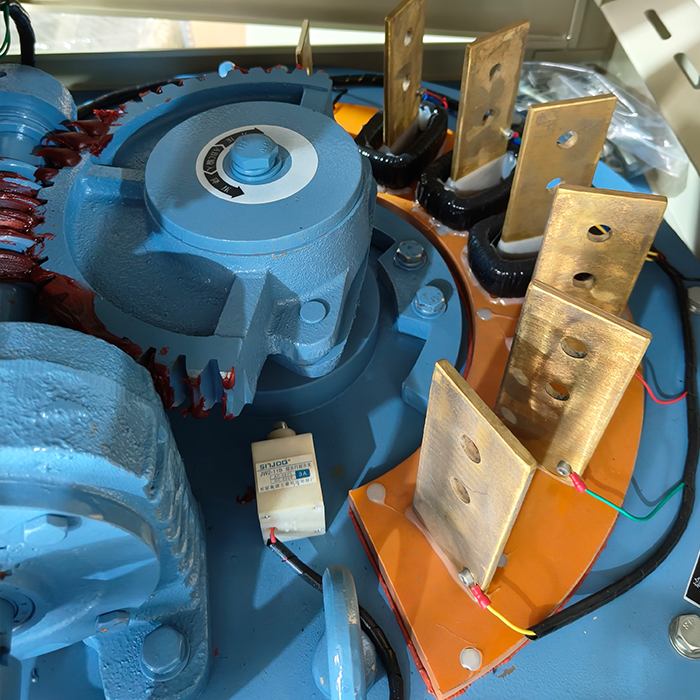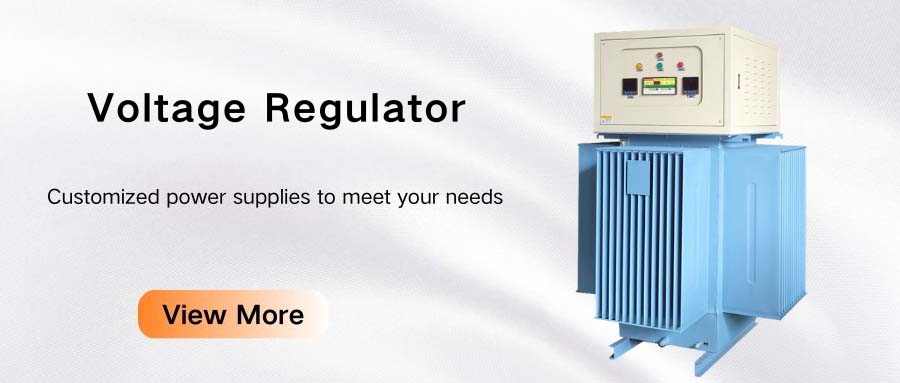A three-phase voltage regulator is a circuit used to control the constant power supply voltage. It is composed of three controllable resistors, three thyristors and a transformer. When the three controllable resistors and three thyristors are properly controlled, the voltage of the three-phase power supply can be kept constant. But in practical applications, the three-phase voltage regulator does not always work well, and sometimes there is an imbalance. The following will introduce the causes and solutions of unbalanced three-phase voltage regulator in detail.
Causes of imbalance
1. Unbalanced power supply voltage
When the three-phase power supply voltage is balanced, the three-phase load current is balanced, and the output voltage of the three-phase voltage regulator is also relatively balanced. But when the power supply voltage is unbalanced, the load current will be unbalanced, resulting in an unbalanced output voltage of the voltage regulator. There are many reasons for unbalanced power supply voltage, such as voltage fluctuation, voltage reduction, line overload, etc.
2. Unbalanced load
Unbalanced three-phase load current is also one of the reasons for unbalanced output voltage of the voltage regulator. The unbalanced three-phase load can be caused by many factors, such as the unevenness of the load itself and the unevenness of the back electromotive force generated when the motor rotates.
3. Asymmetric conduction of thyristors
The connection method of thyristors in three-phase voltage regulators will affect the conduction symmetry of thyristors. When the conduction of thyristors is asymmetric, the resistance between the interconnections will also be unbalanced, and the output voltage of the voltage regulator will also be affected.
4. Asymmetric inductor magnetic circuit
Asymmetric inductor magnetic circuit is also one of the reasons for the unbalanced three-phase voltage regulator. When the inductor magnetic circuit is unbalanced, it will cause different resistance values of the inductor, thus affecting the balance of the output voltage of the voltage regulator.
5. External environmental interference
External environmental interference may also affect the operation of the three-phase voltage regulator. When the voltage regulator is too close to other electronic devices, it will be interfered by other devices, affecting the balance of the output voltage.

Unbalanced solution
1. Power supply voltage balance
When the power supply voltage is unbalanced, a power balancer is needed to balance the voltage. In the case of unbalanced three-phase power supply voltage, the power balancer will adjust the power supply voltage to achieve the purpose of balancing the power supply voltage.
2. Load balance
During the operation of the voltage regulator, a load balancer can be used to balance the load current. The load balancer is usually composed of inductance, resistance, capacitance, etc.
3. Adjust thyristor conduction
When the thyristor conduction of the voltage regulator is unbalanced, it can be solved by adjusting the thyristor connection method or using symmetrical thyristors.
4. Adjust the inductor magnetic circuit
In the three-phase voltage regulator, the balance of the inductor magnetic circuit is very important, and the balance of the inductor magnetic circuit can be adjusted by increasing the inductance or using symmetrical inductance.
5. Prevent interference
In order to prevent external interference, shielding measures can be taken or the voltage regulator can be kept at a certain distance from other devices.
Unbalance of the three-phase voltage regulator is one of the common problems of the voltage regulator during operation. It is very important to understand the causes of imbalance and the corresponding solutions. By choosing a suitable solution, the stability and reliability of the three-phase voltage regulator can be effectively improved to ensure the normal operation of electronic equipment.







